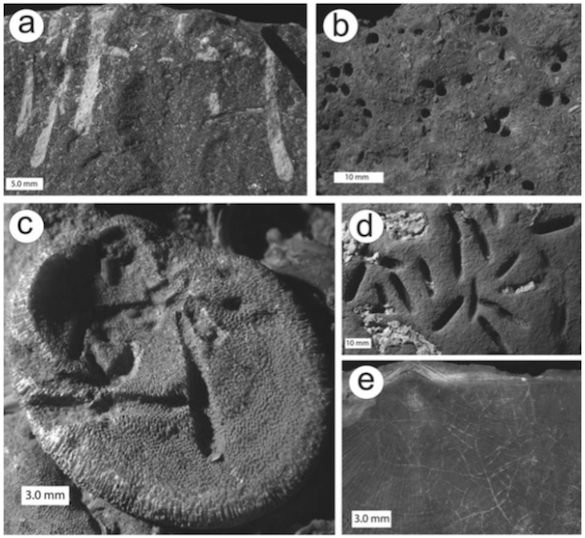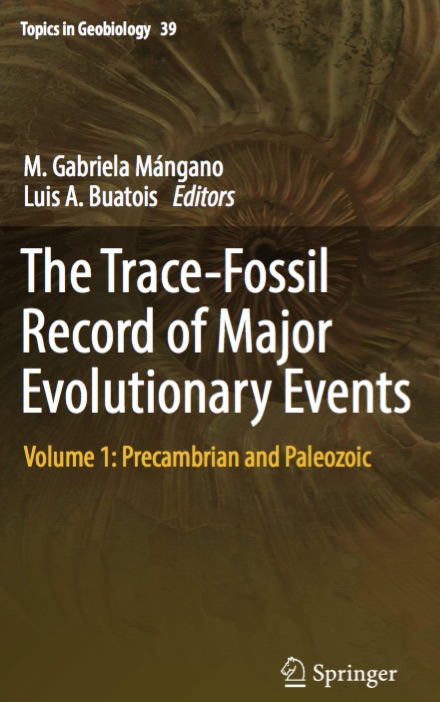 This week’s post is a celebration of the appearance of a remarkable two-volume work on trace fossils and evolution. The editors and major authors are my friends Gabriela Mángano and Luis Buatois (University of Saskatchewan). They are extraordinary geologists, paleontologists and ichnologists (specialists on trace fossils). They led this massive effort of multiple authors and thousands of manuscript pages. Turns out they are inspiring scientific leaders as well as sharp-eyed editors.
This week’s post is a celebration of the appearance of a remarkable two-volume work on trace fossils and evolution. The editors and major authors are my friends Gabriela Mángano and Luis Buatois (University of Saskatchewan). They are extraordinary geologists, paleontologists and ichnologists (specialists on trace fossils). They led this massive effort of multiple authors and thousands of manuscript pages. Turns out they are inspiring scientific leaders as well as sharp-eyed editors.
My contribution is in the first volume within a chapter (co-authored with Gabriela, Luis, and Mary Droser of the University of California, Riverside) entitled “The Great Ordovician Biodiversification event”. We examine here the relationship between trace fossils and the critical evolution of marine communities through the Ordovician. My main responsibility was sorting out the changes in the bioeroders over the course of the period. Way back in 2001, Tim Palmer and I noticed a rise in bioerosion trace fossil diversity and abundance in the Middle and Late Ordovician. We grandly called it the “Ordovician Bioerosion Revolution”. The concept and name stuck.
The top image is Fig. 4.8 from the book. The caption: Upper Ordovician bioerosion structures. (a) Trypanites weisi (cross-sectional view) in a carbonate hardground. Katian, Grant Lake Limestone, near Washington, Kentucky, USA; (b) Trypanites weisi (bedding-plane view) in a carbonate hardground. Katian, Grant Lake Limestone, near Manchester, Ohio, USA; (c) Palaeosabella isp. in a trepostome bryozoan. Katian, Whitewater Formation, near Richmond, Indiana, USA; (d) Petroxestes pera. Katian, Whitewater Formation, Caesar Creek Lake emergency spillway, near Waynesville, Ohio, USA; (e) Ropalonaria venosa in a strophomenid brachiopod. Katian, Liberty Formation near Brookville, Indiana, USA.
 The cover of the book, which is described here on the publisher’s website.
The cover of the book, which is described here on the publisher’s website.
References:
Mángano, G., Buatois, L., Wilson, M.A. and Droser, M. 2016. The Great Ordovician Biodiversification event, p. 127-156. In: Mángano, G. and Buatois, L. (eds.), The trace-fossil record of major evolutionary events. Topics in Geobiology 39 (Springer).
Wilson, M..A. and Palmer, T.J. 2001. The Ordovician Bioerosion Revolution. Geological Society of America Annual Meeting, Boston, Paper No. 104-0. November 7, 2001.
Wilson, M.A. and Palmer, T.J. 2006. Patterns and processes in the Ordovician Bioerosion Revolution. Ichnos 13: 109-112.


